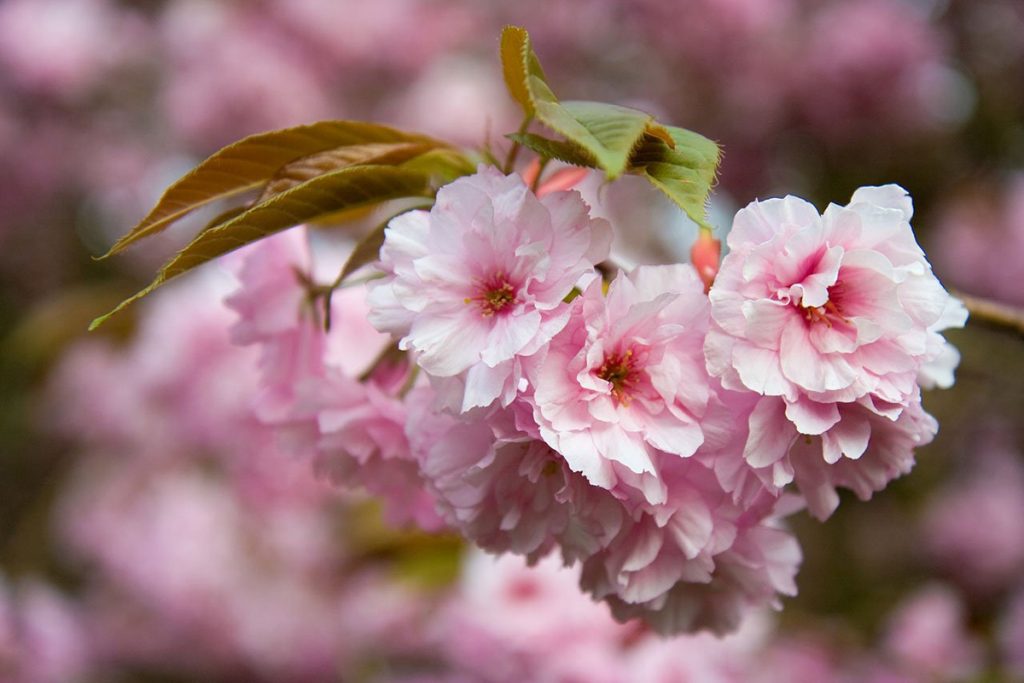
Spring has finally arrived! With more sunlight, longer days, and warmer weather available, this time of year is full of landscaping possibilities. Now is the time to hit the ground running by giving your landscape the spring maintenance it needs to bloom with the season.
However, for many busy homeowners, it can be hard to even find the time to make a spring landscape maintenance plan. While it can seem overwhelming at first, taking the time to develop a solid spring landscaping plan will help you get a greater return on your landscape investment. After all, you don’t want all of last year’s hard landscaping work to go to waste.
Not sure where to begin? We’ve compiled a list of spring maintenance ideas that will have your landscape thriving in no time. Keep reading to learn how you can take advantage of the new season to cultivate the landscape of your dreams.
Start Pruning
Many landscapers agree that pruning is an essential task for spring landscape maintenance. For best results, prune your trees and shrubs in the early weeks of spring. This will give them ample time to grow with the season.
Not only is pruning an efficient way to keep your trees and vegetation healthy, it can also prevent storm damage. Heavy rainfall from spring showers can cause weakened or diseased branches to come crashing down onto your property. Keep up with consistent pruning to minimize this potential threat.
Inspect And Strengthen Landscape Edging
If you want to get your landscape ready in time to entertain summer guests, maintaining your landscape edging is essential. In landscaping terms, edging is the area that defines the where your lawn ends and the rest of your landscape begins. In addition, edging is a great way to protect your landscape beds from excess sod.
During the cold winter months, your edging may have deteriorated. Take the time now to inspect your edging for any possible signs of seasonal damage. If you notice the edging is falling down or overrun with sod, take the time to repair and strengthen it.
Begin Planting
Spring is one of the best seasons to add new plants to your landscape. While you may be eager to get started, it’s important to wait until the ground is completely thawed. This will make it easier to add your new flowers, trees, and vegetation.
If you want plants that really thrive in California’s climate, reach out to your local landscaping team or nursery. There you can find landscaping experts with years of professional planting experience. They will be able to help you choose plants that can survive California’s weather and complement your current landscape design.
Add Mulch To Keep Your Landscape Healthy
Adding mulch to your landscape is a fantastic way to improve the health of your plants while giving your landscape a fresh look at the same time. By adding mulch to your landscape, you can have better control over the moisture. This is because mulch is able to absorb excess water from heavy rainfall. Then, overtime, the mulch slowly releases the water, enabling plants to get a healthy amount.
Mulch also has the added benefit of weed prevention. Adding the right amount of mulch will weigh down any budding weeds, effectively preventing them from growing and taking over your landscape. However, it is important that you add the right amount of mulch. Too much can end up suffocating your plants. Before you apply any spring mulch, make sure you have first removed any leftover fall mulch. It’s also important to wait until your spring plants begin to emerge above ground before you lay down any new mulch. This way you know where your plants are and won’t face the risk of accidentally covering them.
Find The Right Fertilizer For Your Landscape
Fertilizer is a great way to give your landscape the nutrients it needs to grow strong and healthy. A good time to add fertilizer is just before or right after a light rain. If rain isn’t on the forecast, you can get around this by watering the designated area and then waiting two days before you add the fertilizer. Remember, timing is important. For example, if you want a lush green lawn in time for summer, the early weeks of spring are the perfect time to incorporate fertilizer into your lawn care routine.
It is also important to consider what type of fertilizer you will be using. Some fertilizers can include herbicides to prevent weeds from growing. Unfortunately, the components that kill weeds can also harm any other germinating seed. This includes your new plants. To prevent this from happening, it is crucial that you do some research to determine which fertilizer will work best for your unique landscape. You can also contact a professional landscaper to seek their expert advice.
